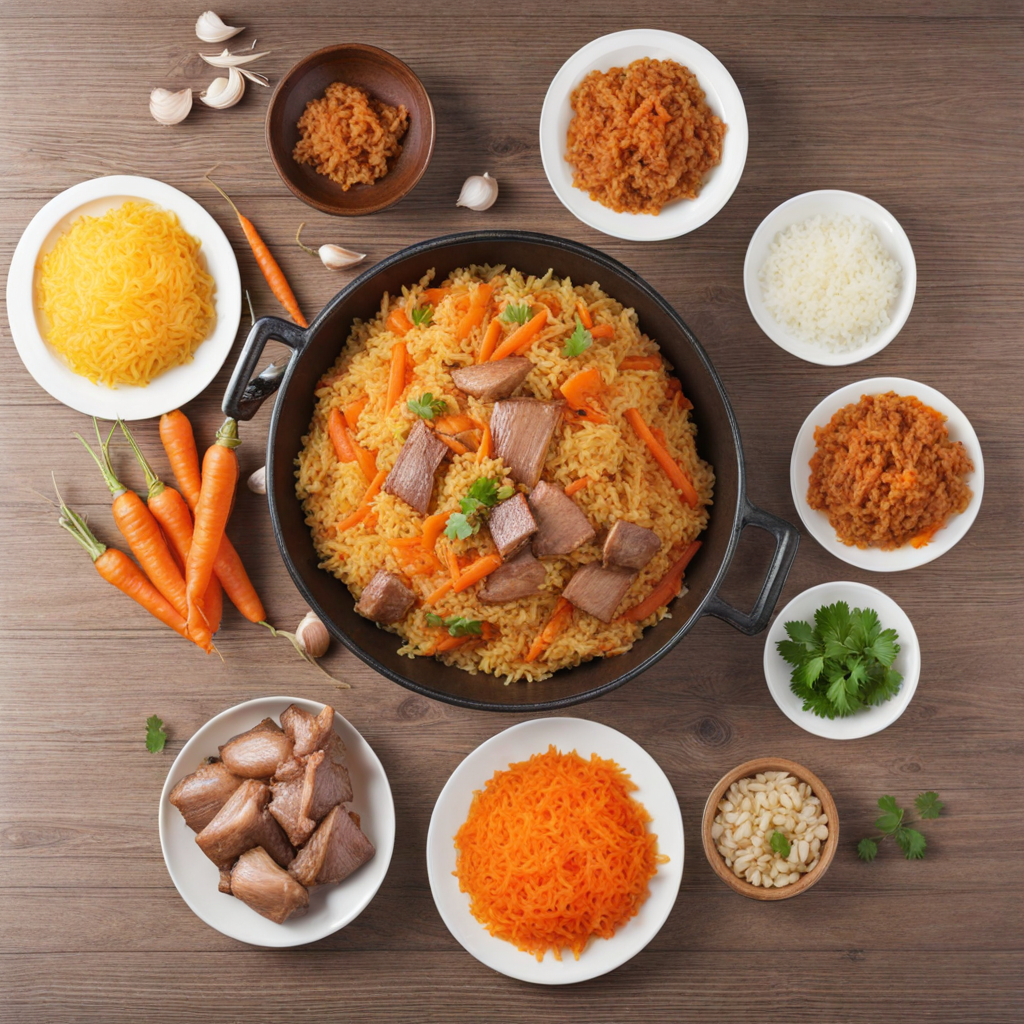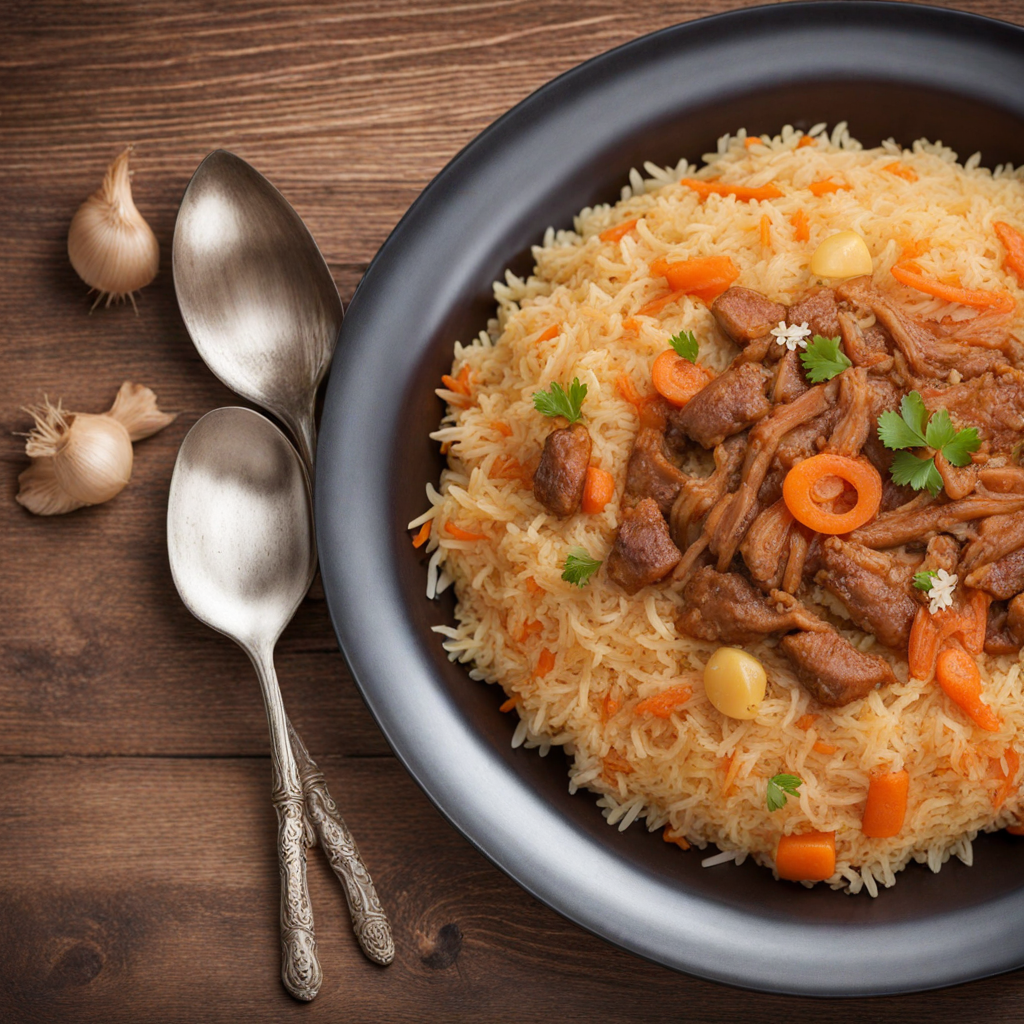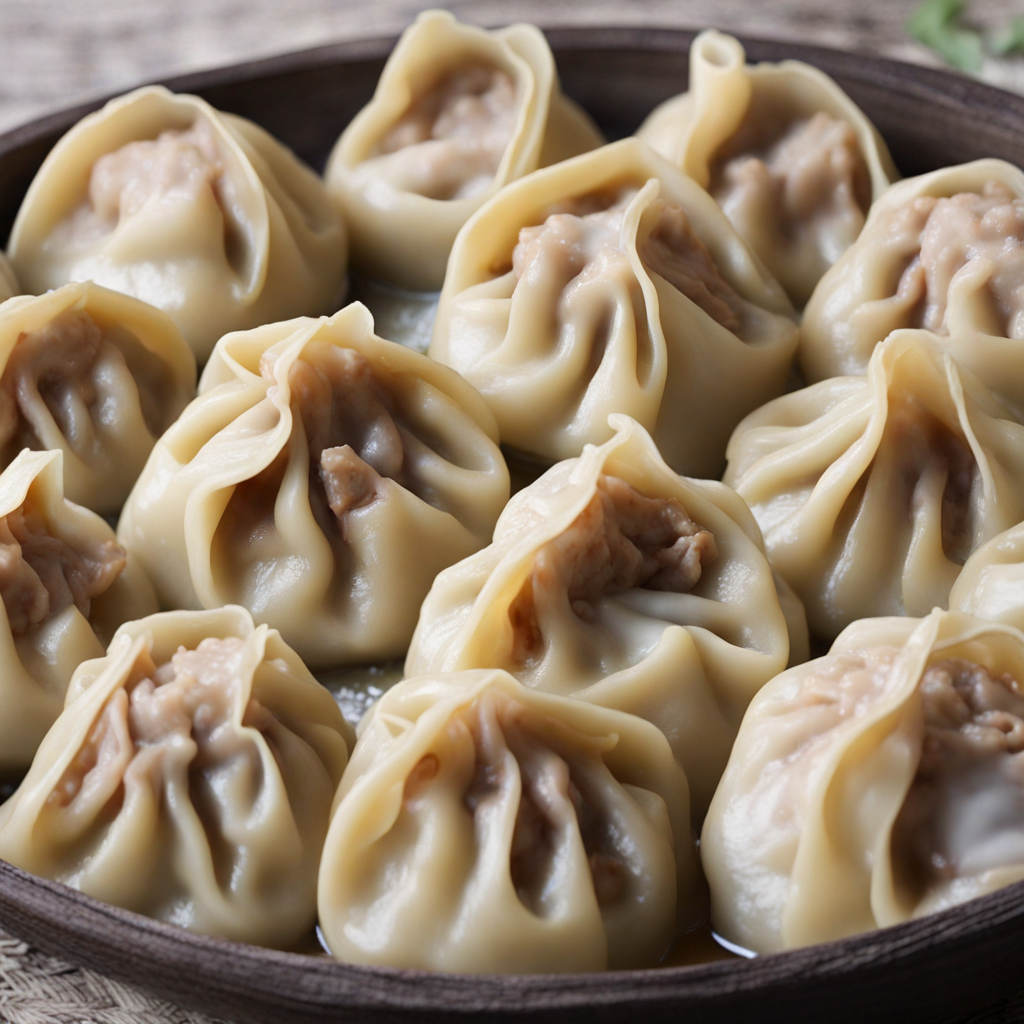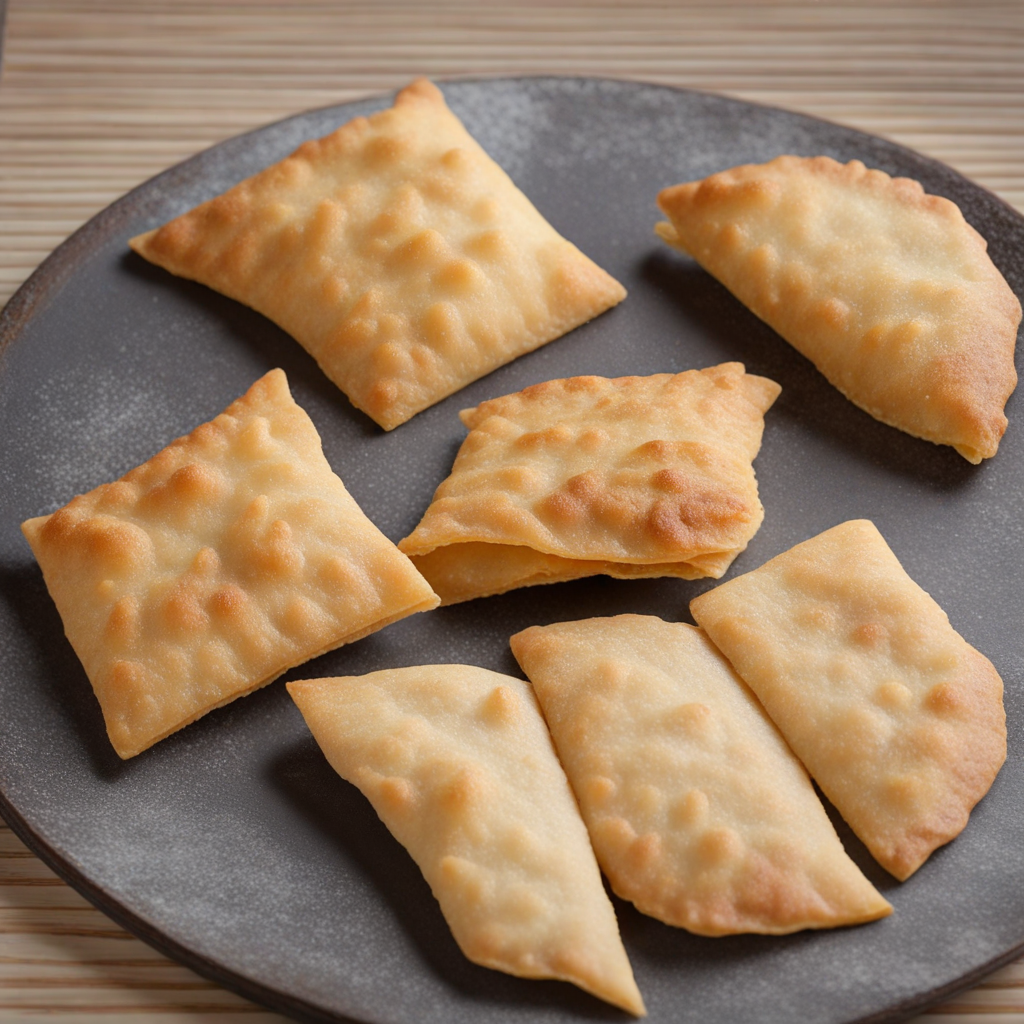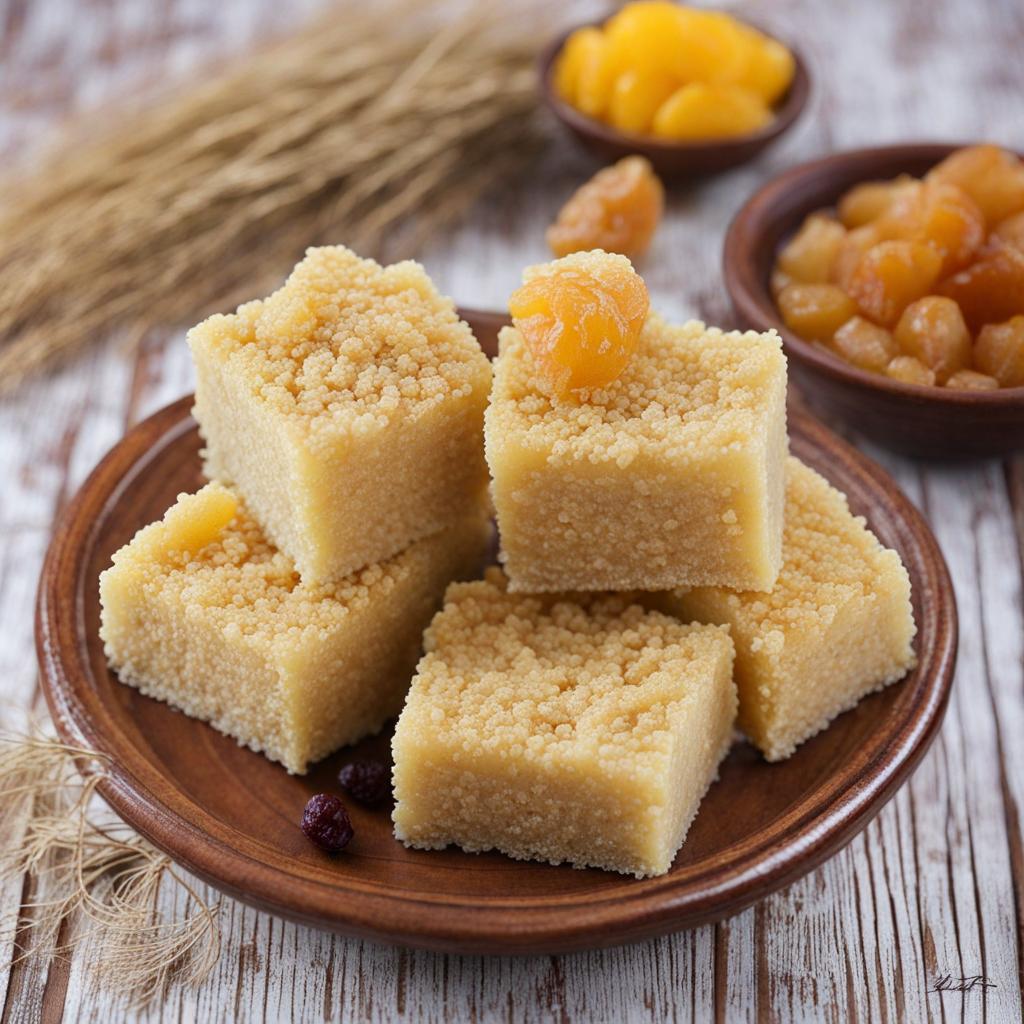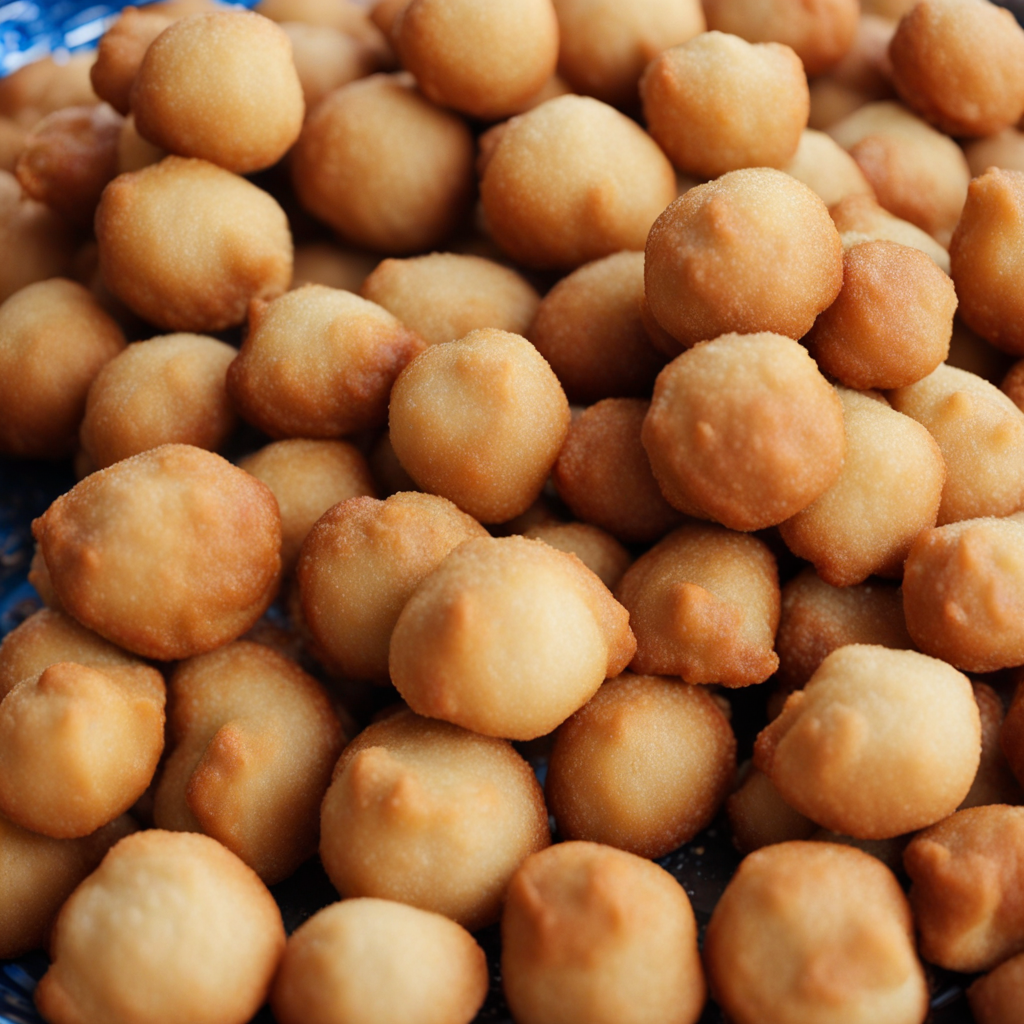Plov
Plov, a beloved dish originating from Central Asia, particularly Kazakhstan, is a fragrant rice pilaf that embodies the rich culinary traditions of the region. This dish typically features long-grain rice, which is cooked with an array of spices, giving it a warm, aromatic profile. The rice is often simmered in a savory broth infused with flavors from ingredients like cumin, coriander, and garlic, which together create a delightful harmony of tastes that is both comforting and satisfying. The vibrant yellow color of the rice, usually achieved through the use of saffron or turmeric, adds an inviting visual appeal to the dish. The heart of Plov lies in its meat component, commonly made with lamb, beef, or chicken, which is slow-cooked to tender perfection. The meat is usually cubed and sautéed with onions and carrots, allowing the flavors to meld beautifully. Some variations of Plov also include dried fruits such as raisins or apricots, which provide a sweet contrast to the savory elements, enhancing the overall complexity of the dish. The final assembly sees the rice layered atop the meat and vegetables, allowing the grains to absorb all the rich, meaty flavors during the cooking process. Plov is often served as a communal dish, making it a staple for gatherings and celebrations in Kazakhstan. It’s typically presented on a large platter, encouraging sharing and togetherness among diners. Accompanying the Plov, you might find fresh herbs, pickles, or a side of salad, balancing the hearty meal with fresh, zesty elements. Each bite of Plov is not only a taste of its rich ingredients but also a connection to the cultural heritage of Kazakhstan, making it a must-try for anyone seeking to explore new and exciting flavors.
How It Became This Dish
Origin of Plov Plov, known in Kazakhstan as "plov" or "pilaf," has deep historical roots that trace back to ancient Central Asia. Its origins are often linked to the Persian "polow," which itself derives from the word "pilaf." The dish is believed to have been brought to the steppes by nomadic tribes as they migrated across the region. The earliest references to a rice dish similar to plov can be found in ancient texts, including those of Persian and Arabic scholars. The preparation of plov traditionally involves rice cooked with meat, typically lamb or beef, and a medley of spices and vegetables. The dish was likely influenced by the agricultural practices of settled communities who cultivated rice alongside the pastoral lifestyle of the nomadic tribes. As a result, plov became a versatile dish, allowing for regional adaptations based on available ingredients, which contributed to its enduring popularity. Cultural Significance In Kazakhstan, plov is more than just a meal; it is a symbol of hospitality and communal gatherings. It is often served during significant occasions such as weddings, birthdays, and religious celebrations. The preparation of plov is typically a communal activity, with family and friends coming together to cook large quantities, fostering a spirit of cooperation and community. The dish embodies the Kazakh ethos of sharing and generosity, reflecting the importance of social bonds in Kazakh culture. Plov's cultural significance extends beyond mere sustenance; it serves as a marker of identity. For many Kazakhs, plov is a connection to their nomadic heritage and traditions. The dish has evolved over centuries, but its essence remains tied to the values of family, friendship, and communal ties, making it a staple at gatherings that celebrate these principles. Ingredients and Variations The classic Kazakh plov is composed of a few essential ingredients: rice, meat (usually lamb or beef), carrots, onions, and a blend of spices such as cumin and coriander. The rice is typically long-grain, and it is often cooked in a kazan, a traditional cast-iron pot, which allows for even cooking and enhances the dish's flavors. Regional variations of plov exist throughout Kazakhstan and Central Asia, reflecting local tastes and customs. For instance, in some areas, dried fruits like raisins or apricots are added for sweetness, while in others, the dish may be enriched with nuts or other vegetables. The method of preparation can also vary; some cooks prefer to steam the rice separately, while others incorporate it directly into the dish for a more integrated flavor. Historical Development As Kazakhstan experienced various historical transformations, the preparation and significance of plov adapted accordingly. The influence of the Silk Road, a major trade route that connected East and West, introduced new ingredients and cooking techniques to the region. This exchange enriched the culinary landscape of Kazakhstan, leading to a fusion of flavors and styles that transformed traditional dishes, including plov. During the Soviet era, plov became a national dish, celebrated for its simplicity and nourishing qualities. It was often featured in state-sponsored festivities and became a symbol of the Soviet collective identity. However, the dish's preparation remained rooted in Kazakh customs, serving as a reminder of the country's rich culinary heritage amidst the political changes. Modern Interpretations In contemporary Kazakhstan, plov continues to be a beloved dish, enjoyed in homes and restaurants alike. It has retained its status as a centerpiece for social gatherings, with families often preparing it for large groups. Modern chefs are experimenting with new ingredients and presentations, incorporating international flavors while honoring traditional techniques. The rise of culinary tourism has also contributed to the popularity of plov, as travelers seek authentic experiences and local cuisine. As a result, many restaurants now feature their unique spins on this classic dish, showcasing the versatility of plov while respecting its historical roots. Plov in Kazakh Society Plov remains integral to Kazakh society, symbolizing unity and cultural pride. Its preparation is often surrounded by rituals, with the person cooking it often taking on a leadership role within the gathering. It is customary for the most respected member of the family or community to serve the first portions, highlighting the dish's significance in social hierarchy and respect. Moreover, plov is frequently featured in literature and art, celebrated as a metaphor for abundance and community. It appears in songs, poems, and stories that reflect the Kazakh way of life, reinforcing its role as a cultural touchstone that connects generations. Conclusion The history of plov in Kazakhstan is a testament to the country’s rich cultural tapestry. From its ancient origins to its modern-day significance, plov embodies the essence of Kazakh hospitality and community. As it continues to evolve, this cherished dish remains a vital part of Kazakhstan’s culinary identity, reflecting the resilience and adaptability of its people throughout history. The enduring love for plov ensures that it will remain a central element of Kazakh culture for generations to come.
You may like
Discover local flavors from Kazakhstan


